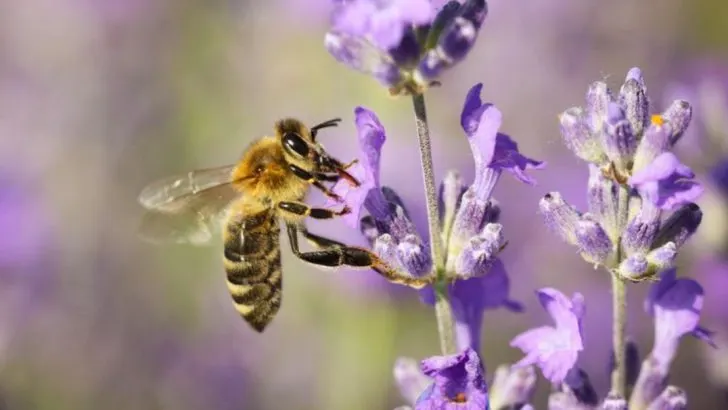Bees play a crucial role in pollination, helping your garden thrive with vibrant blooms and bountiful harvests. Planting the right flowers can turn your garden into a buzzing haven for these essential pollinators. Here are 21 flowers that are irresistible to bees!
Lavender
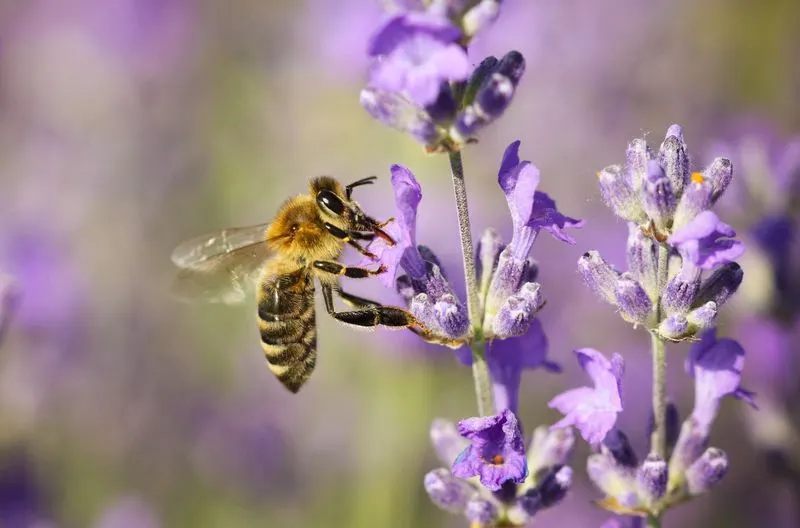
Known for its fragrant aroma, lavender is a favorite for bees. Its purple blooms are not just appealing to the eye but also a crucial source of nectar. Plant lavender in a sunny spot, and watch the bees flock to it. Its long-lasting flowers ensure that bees have a food source for an extended period. Lavender thrives in well-drained soil and requires minimal maintenance, making it an excellent choice for any garden. This hardy plant can withstand drought, providing a reliable food supply even in dry conditions.
Bee Balm
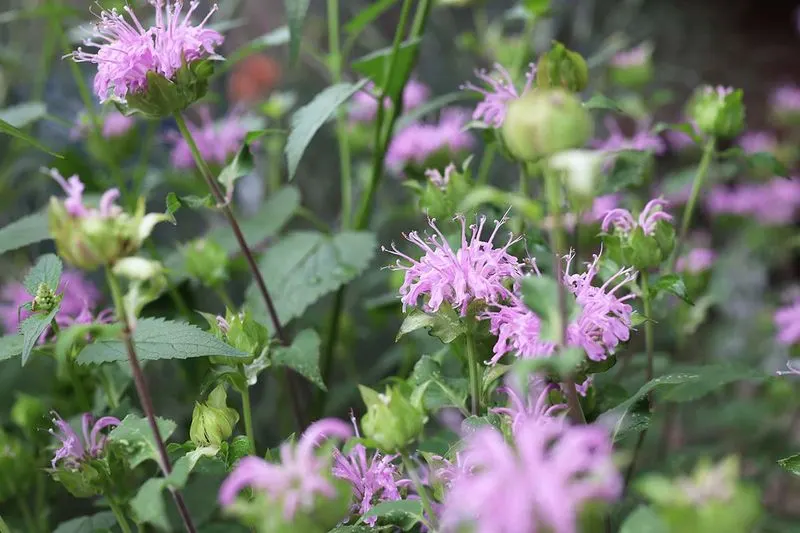
Bee balm, with its vibrant pink and red hues, is a magnet for bees. The tubular flowers provide easy access to nectar. Plant it in groups to create a stunning display that will draw bees in large numbers. Bee balm prefers sunny locations and well-drained soil. Regular deadheading encourages more blooms, extending the feeding season for bees. Its aromatic leaves also add a lovely scent to the garden, making it a delightful presence for humans and pollinators alike.
Sunflower
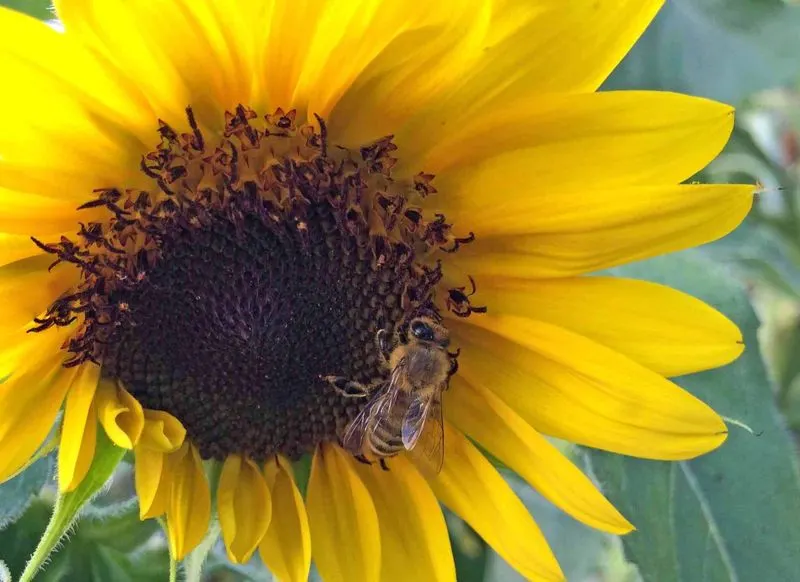
Sunflowers, with their tall stalks and large flower heads, are irresistible to bees. These giants of the garden offer abundant pollen, supporting bee health and vitality. Plant sunflowers in a sunny spot, ensuring they have room to grow tall and strong. Bees are attracted to the bright yellow petals and find the open center easy to access. Sunflowers are also a great way to create a natural windbreak, benefiting other plants in your garden.
Coneflower
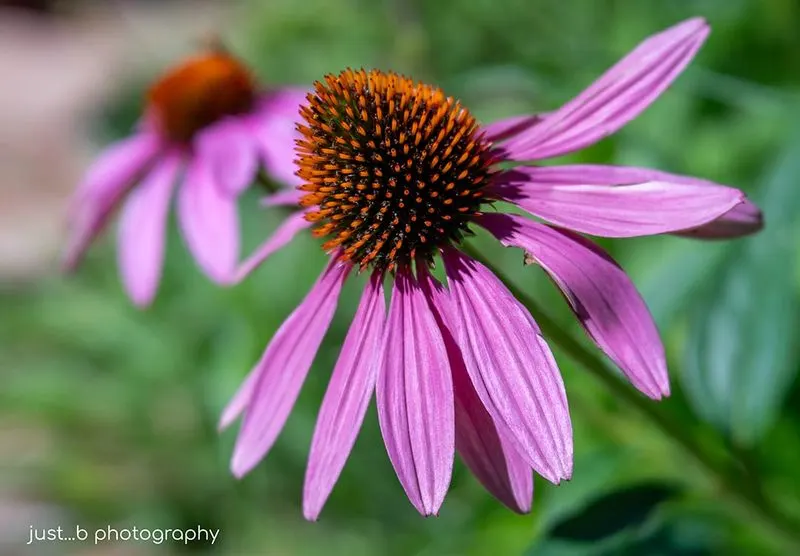
Coneflowers, or Echinacea, are bee favorites due to their large, accessible blooms. These hardy perennials thrive in sunny spots with well-drained soil. Their long-lasting flowers provide nectar for bees throughout the summer. Coneflowers are also known for their medicinal properties, adding a practical element to their beauty. Plant them in clusters to create a striking visual effect and to attract even more pollinators. The vibrant purple and pink tones are a summer highlight.
Borage
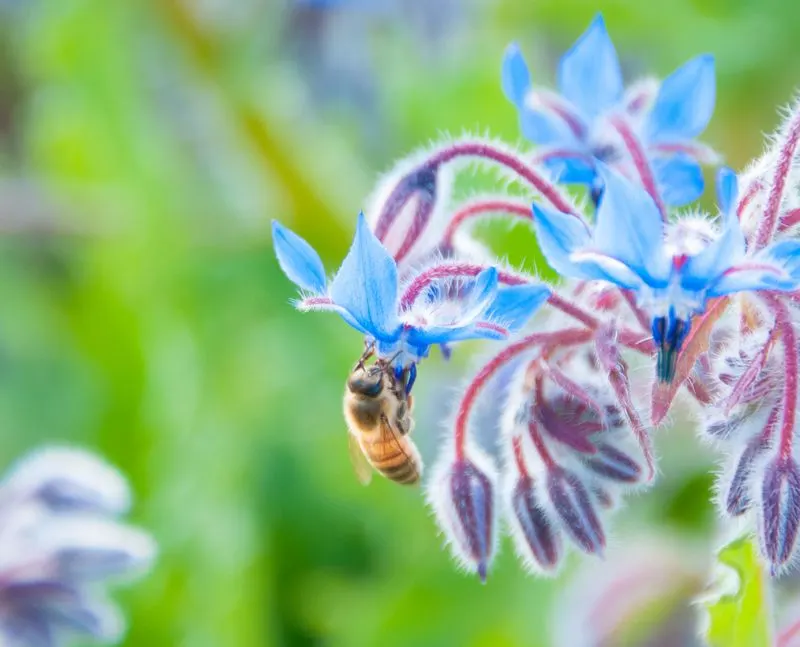
Borage, with its star-shaped blue flowers, is a bee’s delight. This hardy annual grows easily in most gardens, providing nectar-rich blooms for months. Its ability to self-seed means it will likely return year after year, offering a consistent food source. Borage is not only beneficial for bees but also serves as a companion plant to improve the growth of nearby vegetables. The leaves and flowers are edible, adding a cucumber-like flavor to salads.
Foxglove
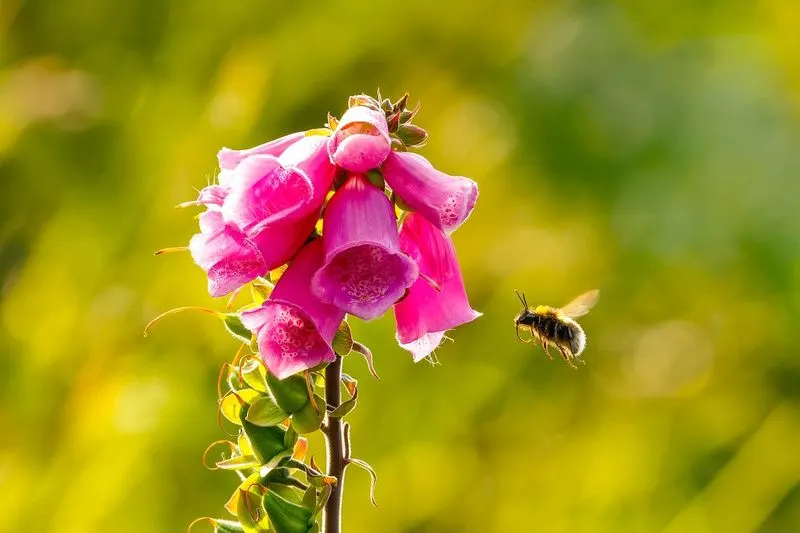
Foxgloves are known for their towering spires and tubular blooms, perfect for bees. These biennials flourish in part-shade and well-drained soil, offering nectar in abundance. The bell-shaped flowers come in various shades, including pink, purple, and white, adding vertical interest to any garden. Foxgloves are particularly attractive to long-tongued bees, who can easily reach into the deep flowers. Planting them in groups enhances their visual impact and bee attraction.
Cosmos
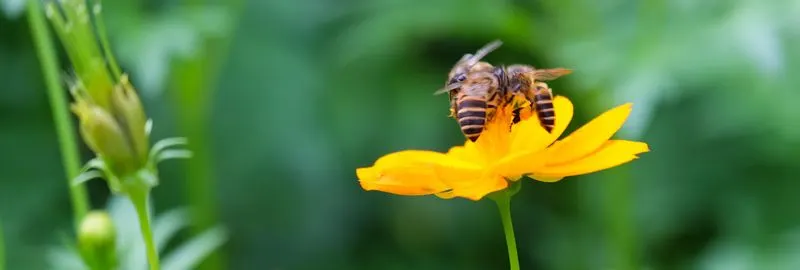
Cosmos are cheerful, easy-to-grow flowers that attract bees with their wide, open blooms. These annuals thrive in sunny spots and can tolerate poor soil conditions. Their daisy-like flowers come in various colors, including pink, white, and orange. Deadheading spent blooms encourages continuous flowering, providing a consistent food source for bees. Cosmos are excellent for cutting gardens, adding beauty to both outdoor spaces and indoor vases. Their delicate foliage adds a soft texture to garden beds.
Salvia
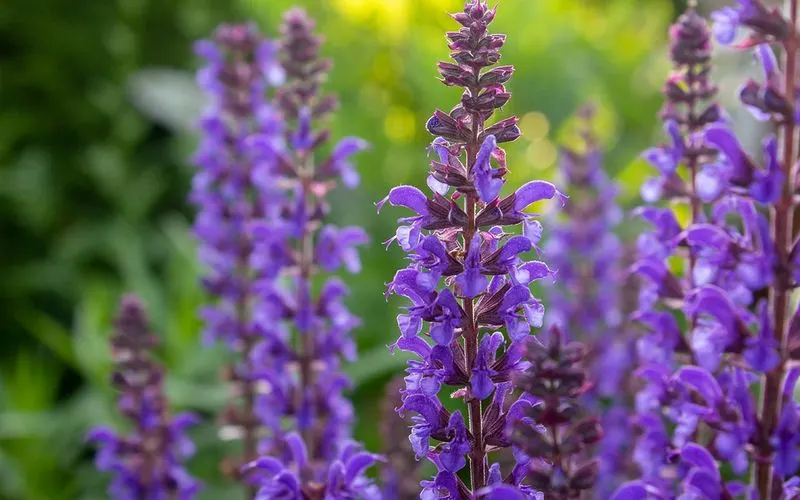
Salvia’s spiky blooms are a favorite among bees, offering nectar throughout the growing season. This hardy perennial is easy to grow and thrives in full sun and well-drained soil. Salvia’s tubular flowers come in a range of colors, from deep purple to bright red, providing visual interest. Regular pruning encourages bushy growth and more flowers, supporting a healthy bee population. Salvia’s aromatic foliage adds another layer of appeal, making it a versatile garden choice.
Marigold
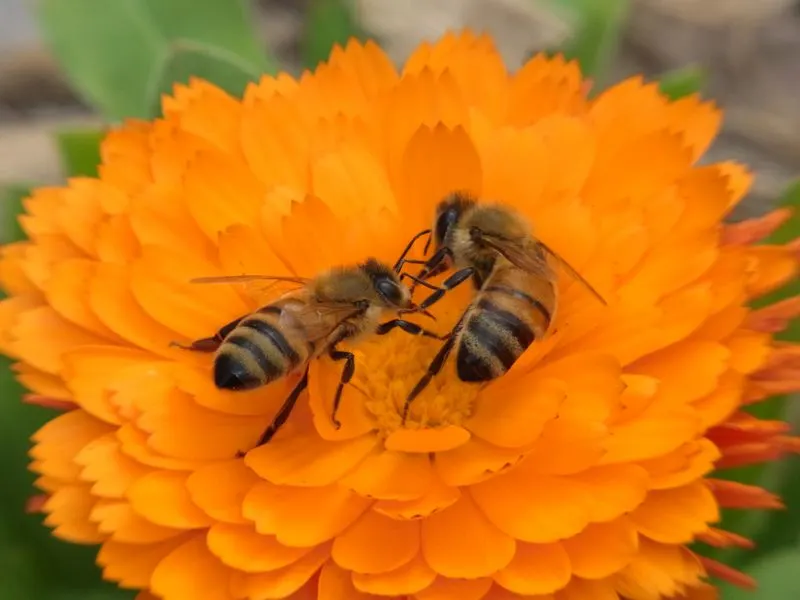
Marigolds, with their bright orange and yellow blooms, are more than just decorative. They attract bees with their nectar-rich flowers and help deter garden pests. These annuals are easy to grow, thriving in sunny spots with well-drained soil. Marigolds’ compact size makes them ideal for borders and containers. Their ability to bloom continuously throughout the season provides a steady food source for bees. Marigolds also improve soil health, making them a valuable addition to any garden.
Zinnia
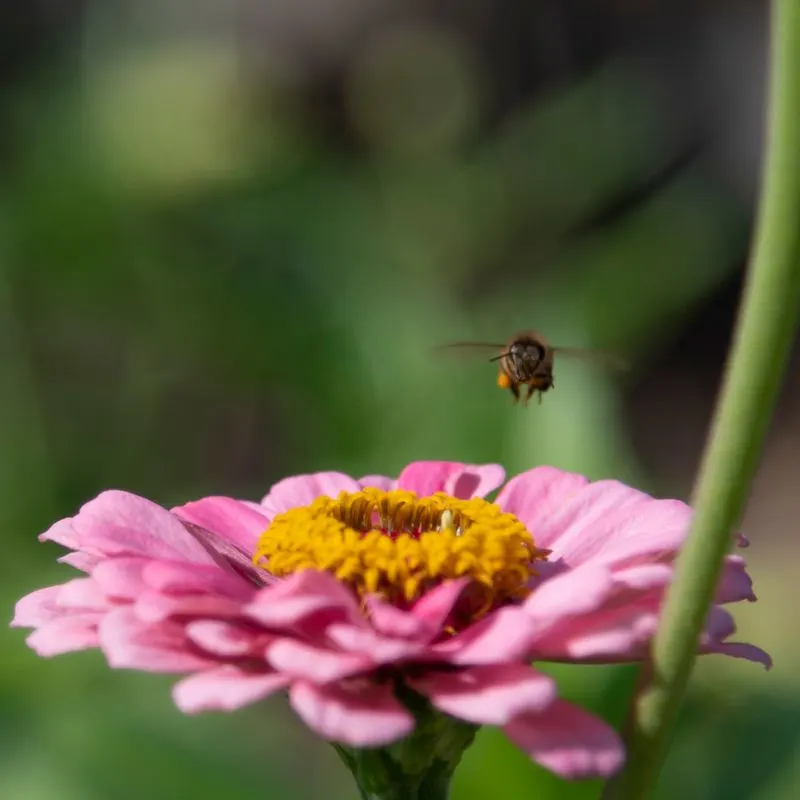
Zinnias are vibrant, easy-to-grow annuals that attract bees with their bold colors and plentiful nectar. These flowers thrive in sunny locations and well-drained soil, blooming from late spring to the first frost. Zinnias’ wide range of colors, from red to pink to yellow, make them a versatile choice for any garden. Their long-lasting blooms provide a continuous food source for bees. Regular deadheading promotes more flowers, ensuring that bees have ample nectar throughout the season.
Buddleja
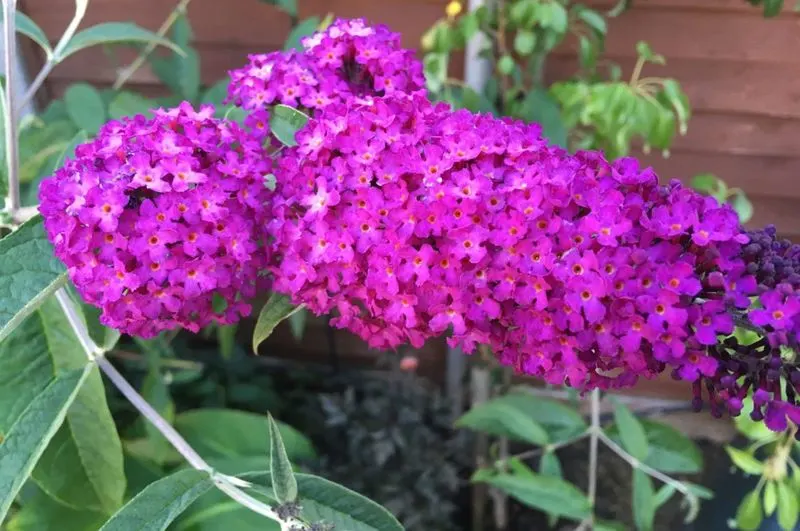
Buddleja, or butterfly bush, is not just a favorite of butterflies but also attracts bees. Its fragrant, nectar-rich flowers bloom in large clusters, providing a feast for pollinators. Plant buddleja in full sun with well-drained soil for best results. The long flowering season, from summer to fall, ensures that bees have a consistent food source. Pruning after flowering encourages more blooms and keeps the plant tidy. Buddleja’s arching branches add a graceful element to garden designs.
Crocus
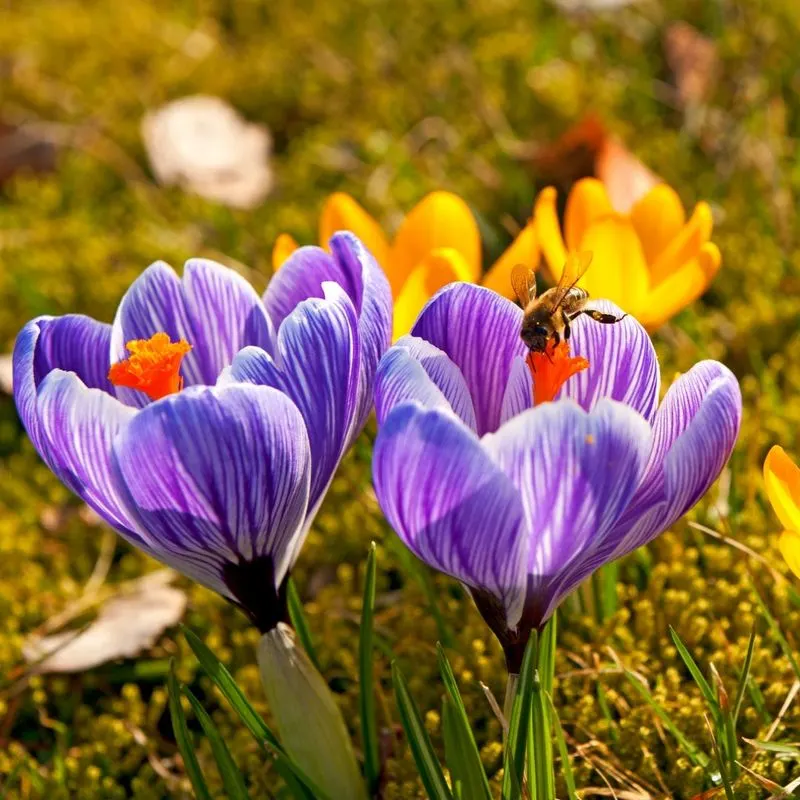
Crocuses are among the first flowers to bloom in spring, offering nectar just when bees are emerging. These low-growing bulbs thrive in sunny spots and well-drained soil. Their cup-shaped flowers come in various shades of purple, yellow, and white. Crocuses are ideal for naturalizing in lawns or under trees, providing early-season nourishment for bees. Plant them in groups for a striking display that will attract the first bees of the year. Their early blooms signal the start of spring’s awakening.
Aster
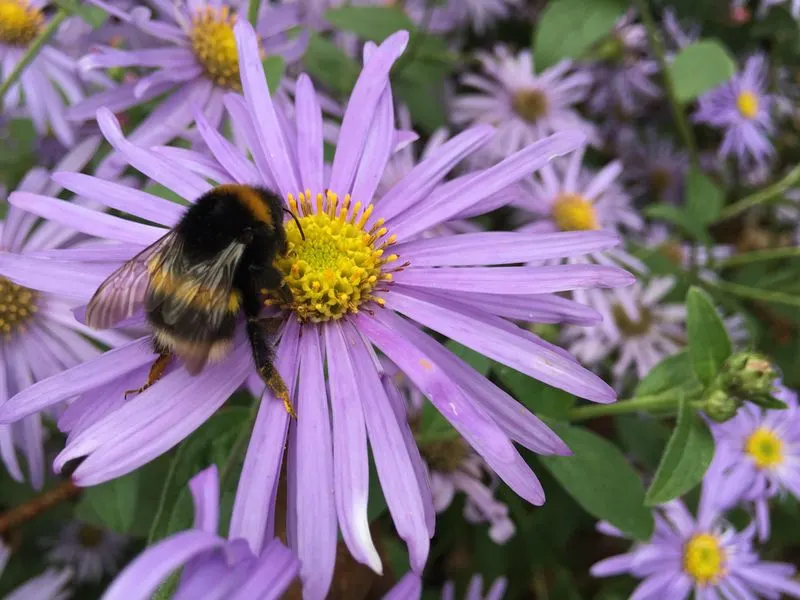
Asters are late-season bloomers, providing nectar when few other flowers are available. These hardy perennials thrive in full sun and well-drained soil, offering a crucial food source for bees in autumn. Asters’ daisy-like blooms come in shades of purple, pink, and white. Their ability to bloom well into fall makes them an essential addition to any bee-friendly garden. Plant them in masses for a dramatic effect and to attract numerous pollinators. Asters also make excellent cut flowers, brightening indoor spaces.
Thyme
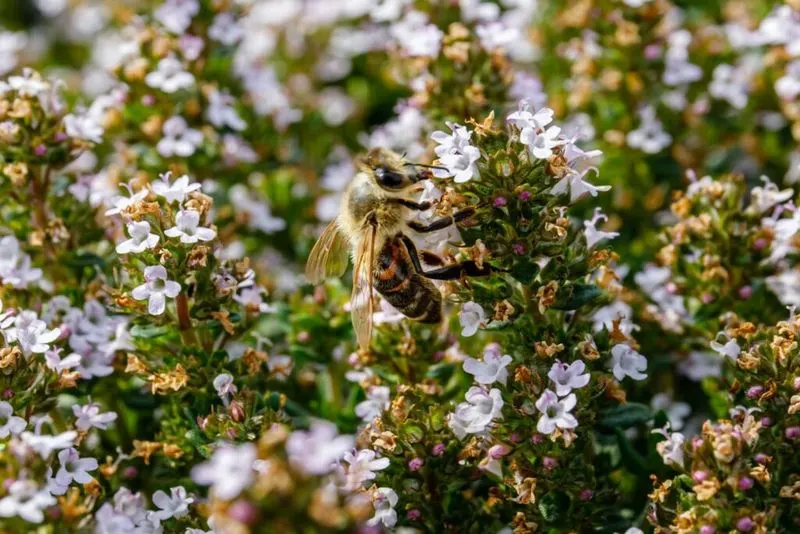
Thyme is not just a culinary herb but also a magnet for bees when in bloom. Its tiny flowers are packed with nectar, providing a valuable food source. Plant thyme in sunny, well-drained areas where it can spread and thrive. This low-growing perennial is perfect for ground cover, rock gardens, or herb gardens. Thyme’s aromatic foliage adds fragrance to the garden, and its flowers are a delightful sight for both bees and gardeners. Regular harvesting keeps it bushy and productive.
Bluebell
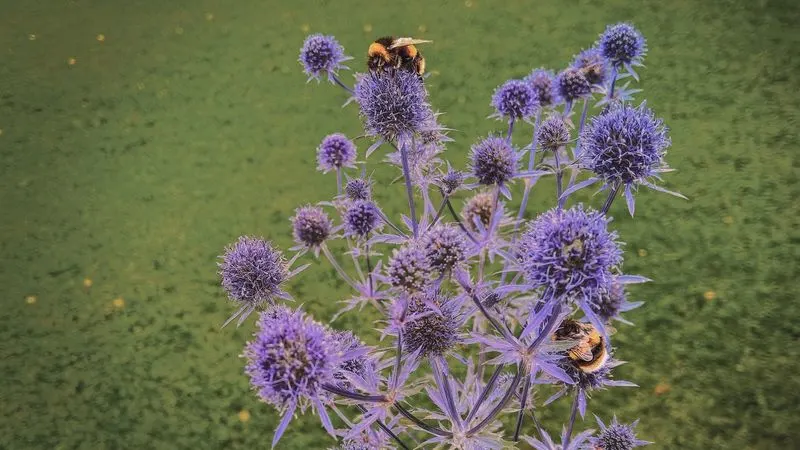
Bluebells are enchanting spring flowers that lure bees with their sweet scent and bell-shaped blooms. These perennials prefer shady areas with well-drained soil, creating a magical carpet of blue in wooded gardens. Bluebells are an important nectar source for bees emerging from hibernation. Plant them in drifts for a natural look that enhances their charm. Their early flowering period ensures that bees have nourishment at the start of the season, supporting their early activity and health.
Sedum
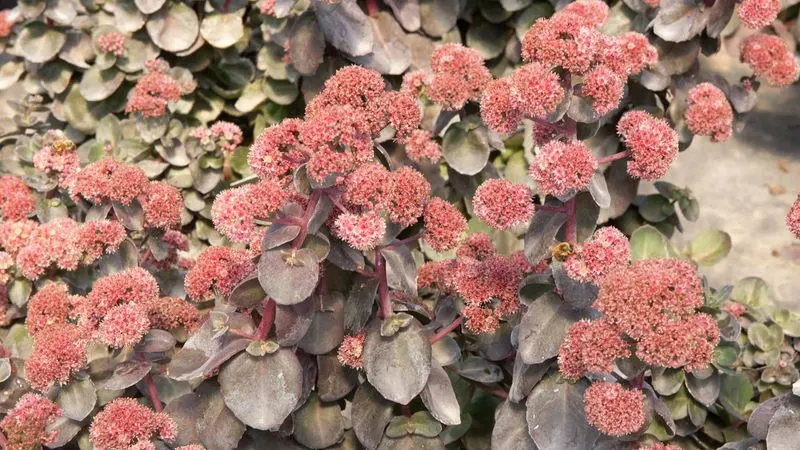
Sedum, or stonecrop, is a succulent that attracts bees with its star-shaped flowers. These hardy perennials thrive in sunny, dry areas, making them ideal for rock gardens or borders. Sedum’s late-summer blooms provide nectar when other flowers are fading, supporting bees during autumn. The fleshy leaves add an interesting texture to garden designs. Sedum requires minimal care, thriving in poor soil conditions and withstanding drought, making it a reliable food source for bees in challenging environments.
Hollyhock
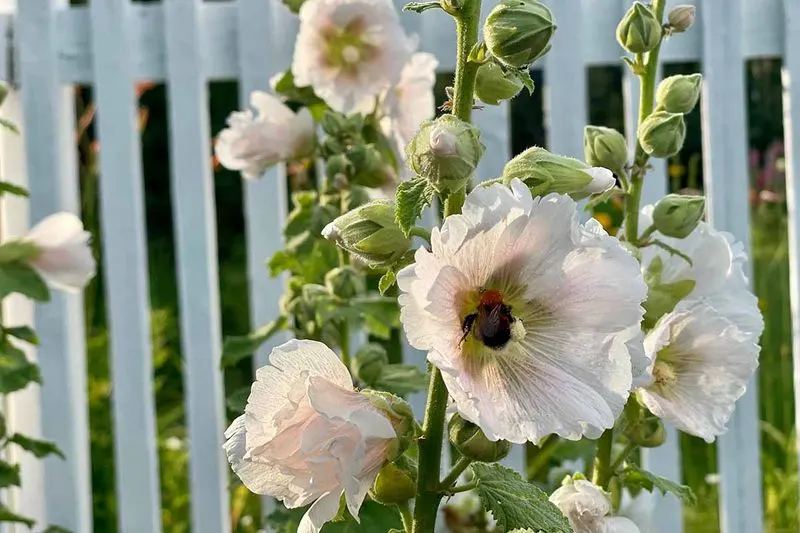
Hollyhocks are classic cottage garden plants with tall spikes covered in large, open flowers. These biennials attract bees with their rich nectar and bold colors. Hollyhocks thrive in full sun and well-drained soil, adding vertical interest to garden beds. Plant them against walls or fences for support, and they will reward you with a summer-long display of blooms. Their towering presence makes them a focal point in any garden, drawing both bees and admirers alike.
Catmint
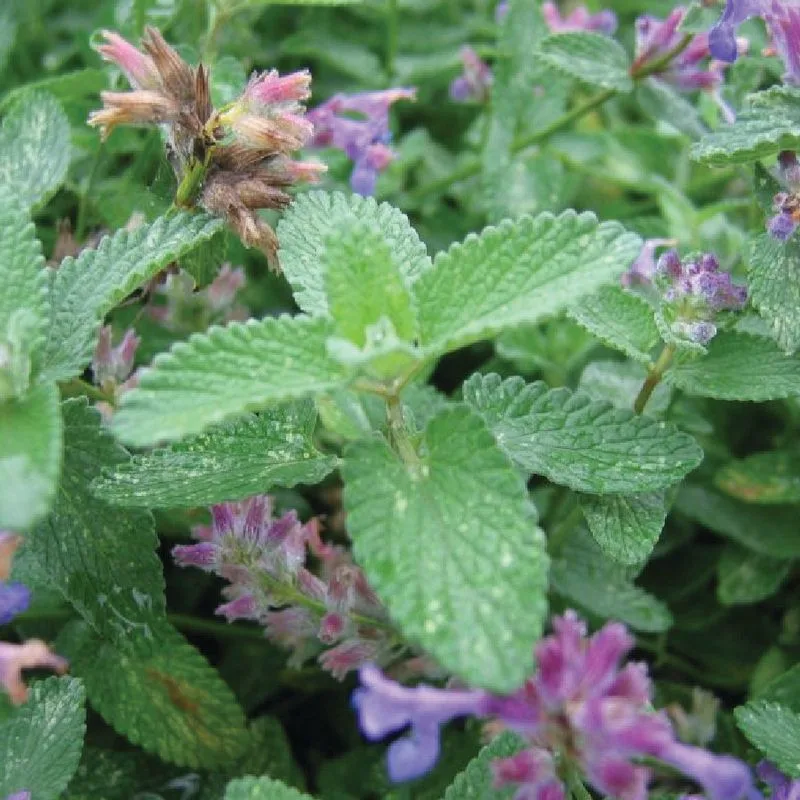
Catmint is a hardy perennial known for its fragrant foliage and abundant purple flowers. Bees are drawn to its nectar-rich blooms, which appear from late spring to early fall. Plant catmint in sunny, well-drained areas for best results. Its sprawling habit makes it ideal for borders or as a ground cover. Regular pruning encourages a tidy shape and more blooms. Catmint’s aromatic leaves add a sensory element to gardens, making it a delightful choice for both bees and gardeners.
Snapdragon
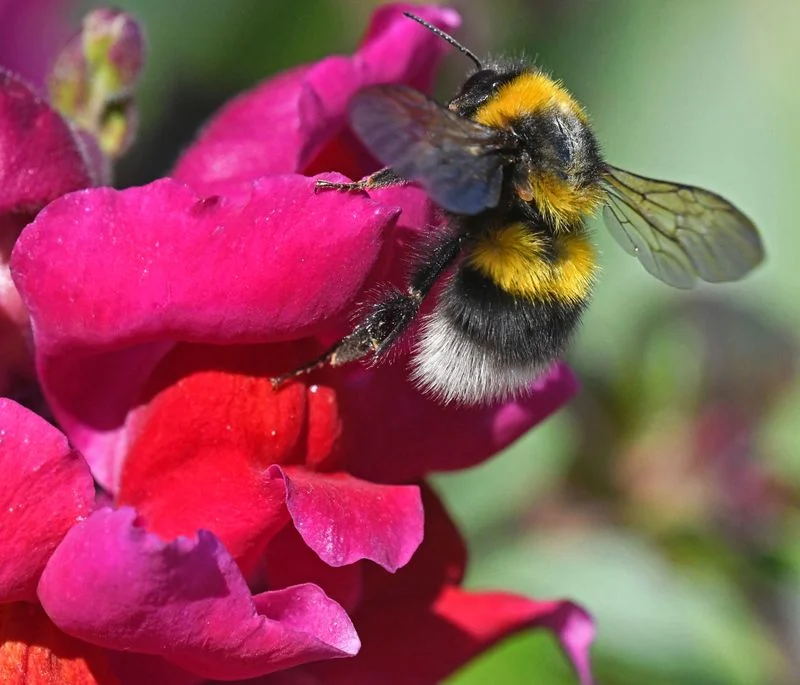
Snapdragons are a favorite in cottage gardens, loved for their unique flowers and bee appeal. These annuals and perennials thrive in sunny spots with well-drained soil. Their tubular blooms come in a wide array of colors, including red, pink, yellow, and white. Snapdragons’ long flowering season provides a consistent nectar source for bees. Plant them in groups for maximum impact and enjoy their cheerful presence in the garden. Regular deadheading promotes more blooms, ensuring a lively and attractive display.
Hebe
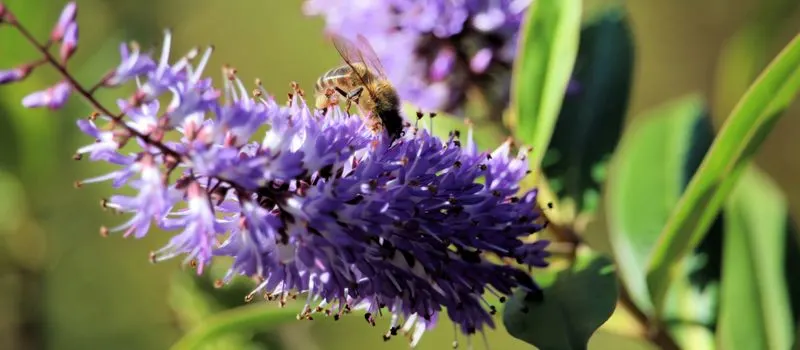
Hebe is a versatile shrub that attracts bees with its dense clusters of flowers. These evergreen plants thrive in well-drained soil and can tolerate full sun to partial shade. Hebe’s long flowering period, from summer to autumn, offers a steady food supply for bees. The compact size and variety of colors make them suitable for borders, containers, or as low hedges. Pruning after flowering keeps them neat and encourages more blooms, enhancing their beauty and bee appeal.
Cherry Blossom
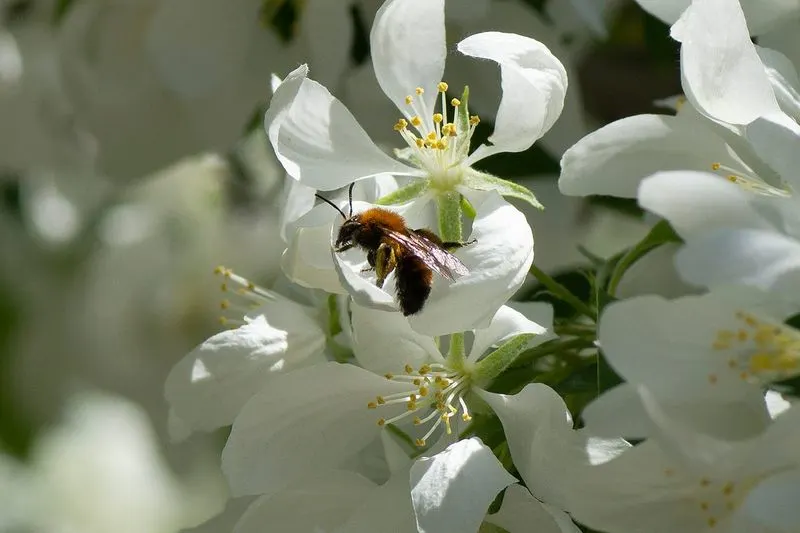
Cherry blossoms are iconic spring bloomers that attract bees with their delicate flowers and sweet nectar. These trees thrive in sunny locations and well-drained soil, providing a stunning display of pink or white blooms. Cherry blossoms signal the start of spring and offer an essential early food source for bees. Their breathtaking beauty makes them a focal point in any garden. Planting a cherry blossom tree can create a serene and picturesque setting, welcoming bees and visitors alike.

